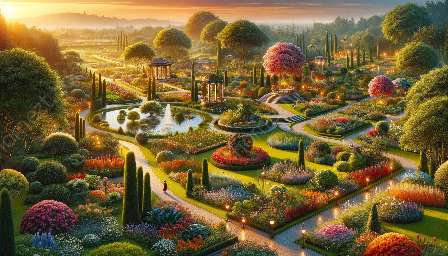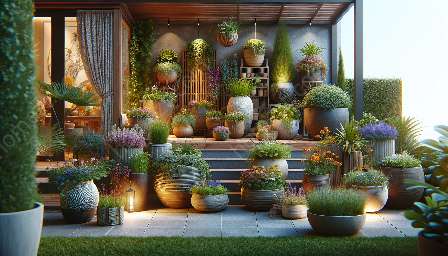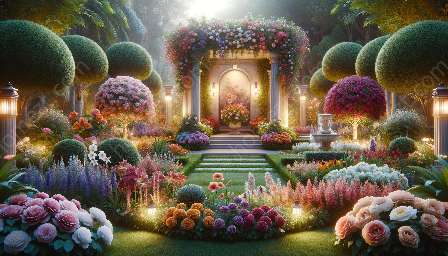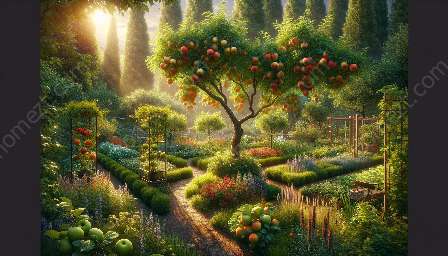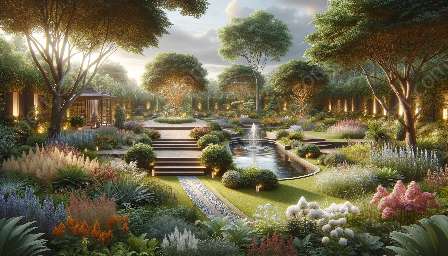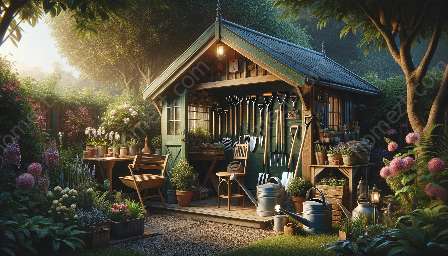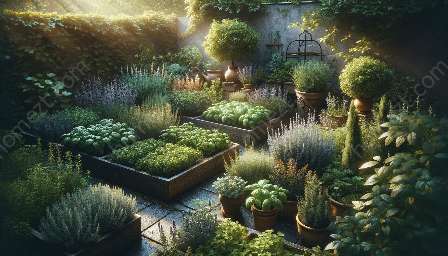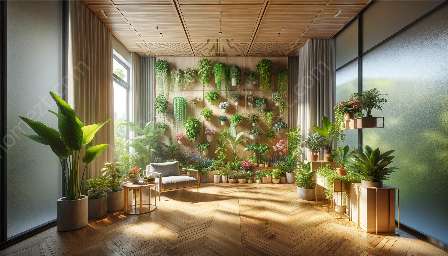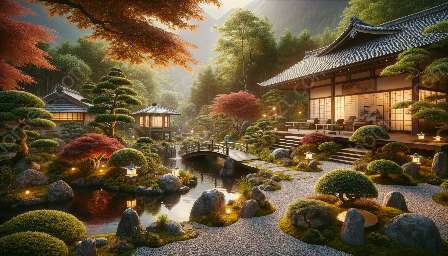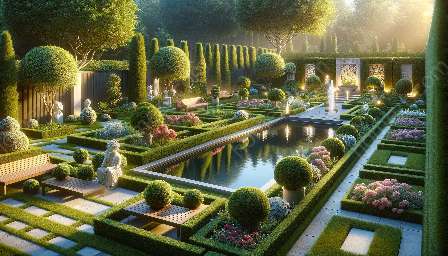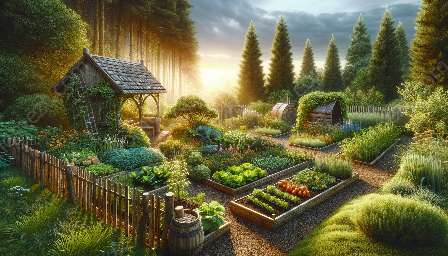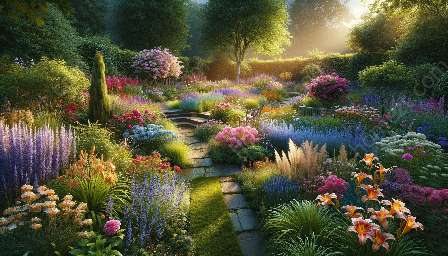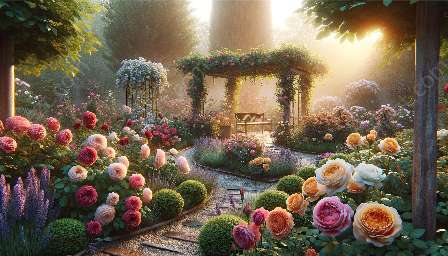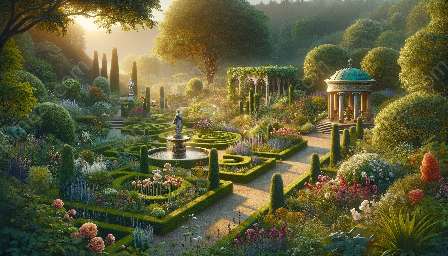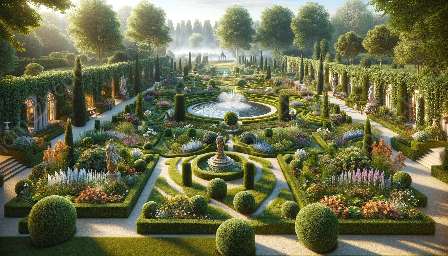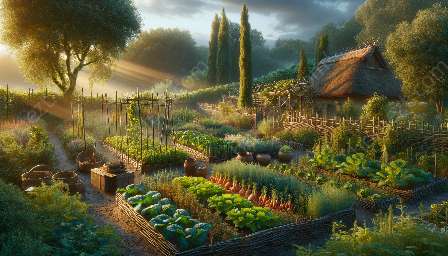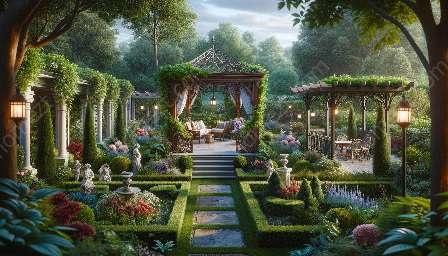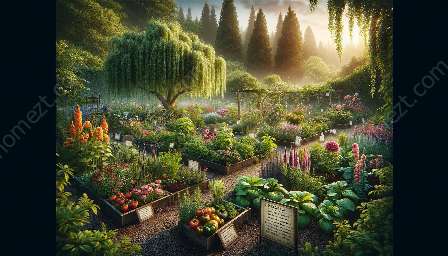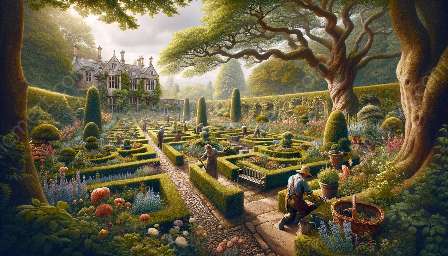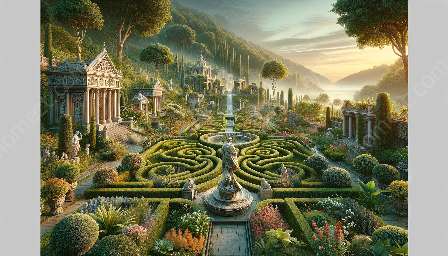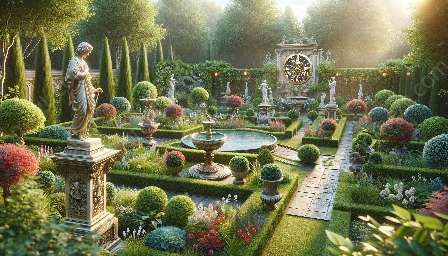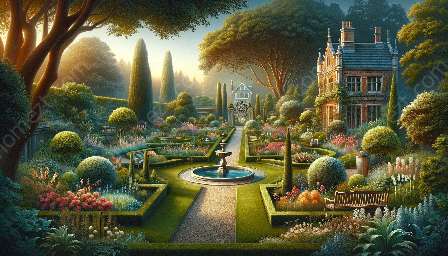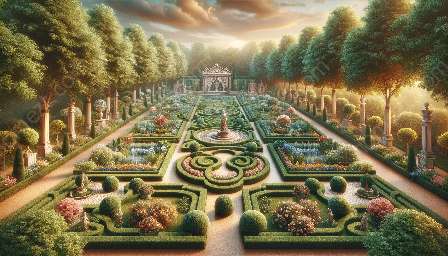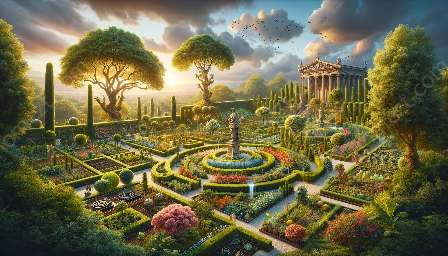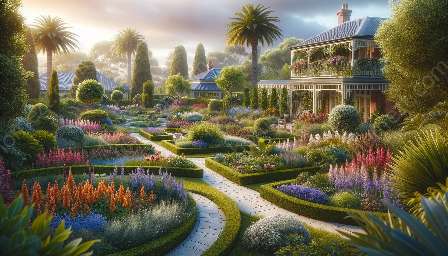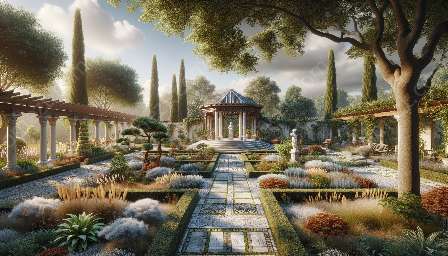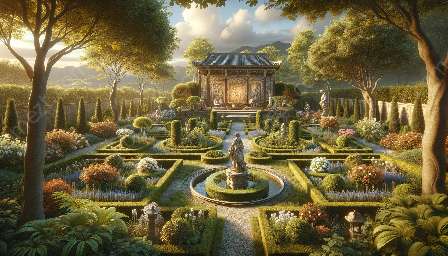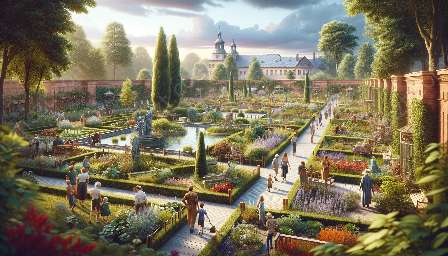Historical garden design is a reflection of the cultural, social, and artistic influences of different eras throughout history. The evolution of garden design has been influenced by various factors, including environmental conditions, technological advancements, and artistic trends.
Heritage gardening seeks to preserve and recreate the historical garden designs that have stood the test of time. It focuses on maintaining and restoring gardens that hold significant historical and cultural value.
The Evolution of Garden Design
Garden design has evolved over centuries, with each era leaving its mark on the landscape. From the formal gardens of ancient civilizations to the naturalistic landscapes of the Romantic era, the history of garden design is a rich tapestry of styles and influences.
Ancient Gardens
Ancient civilizations, such as the Persians, Egyptians, and Greeks, created elaborate gardens that were an extension of their architectural and cultural achievements. These gardens often featured symmetrical layouts, water features, and lush plantings, reflecting the harmony and order of the societies that created them.
Renaissance Gardens
The Renaissance period brought about a renewed interest in classical art and literature, leading to the revival of formal garden design. Renaissance gardens were characterized by geometric layouts, sculpted topiaries, and ornate fountains, mirroring the revival of classical ideals of beauty and order.
Baroque Gardens
The Baroque era saw the creation of extravagant gardens that were designed to impress and awe. These gardens, often associated with royal palaces and estates, featured elaborate parterres, axial pathways, and grand water features, showcasing the power and wealth of their creators.
Victorian Gardens
The Victorian era witnessed a fascination with exotic plants and elaborate ornamentation. The advent of new plant introductions from around the world allowed for lush, exotic planting schemes in Victorian gardens, which often incorporated intricate pathways, gazebos, and trellises.
Influences on Garden Design
Garden design has been shaped by a multitude of influences, including cultural, environmental, and artistic factors. These influences have contributed to the diverse range of garden styles seen throughout history.
Naturalistic Landscapes
The Romantic movement in the 18th and 19th centuries celebrated the beauty of nature, inspiring a shift towards naturalistic landscape designs. This movement introduced the idea of creating gardens that mimicked the untamed beauty of the wilderness, with meandering pathways, picturesque vistas, and informal plantings.
Environmental Considerations
Environmental conditions, such as climate, soil, and water availability, have greatly influenced garden design. Different regions and climates have given rise to unique gardening practices, with gardeners adapting their designs to suit local environmental constraints and opportunities.
Artistic Trends
Art and design movements have also played a significant role in shaping garden design. From the formalism of the Baroque period to the free-flowing lines of Art Nouveau, artistic trends have influenced the aesthetic principles and design elements incorporated into gardens.
Elements of Historical Garden Design
Historical garden designs are characterized by a range of distinctive elements that define their style and purpose. These elements include hardscaping features, plantings, and ornamental details that contribute to the overall ambiance and functionality of the gardens.
Formal Layouts
Formal gardens often feature symmetrical layouts, geometric patterns, and structured plantings, reflecting a sense of order and control. Ornate parterres, sculpted topiaries, and formal hedges are common features of formal garden designs.
Water Features
Water has been a central element of historical garden design, with fountains, ponds, and water channels adding a sense of tranquility and visual interest to the landscape. Water features are often used to create focal points and reflect the status and power of the garden's owner.
Plant Selection
The choice of plants in historical garden designs has been influenced by cultural and horticultural traditions. Different eras have favored distinct plant palettes, with some focusing on exotic and rare specimens, while others embrace native and naturalized species.
Ornamental Details
Ornamental details, such as statuary, pergolas, and decorative urns, have been integral to historical garden designs, adding artistic flourishes and focal points. These ornamental elements contribute to the overall aesthetic and provide opportunities for storytelling and visual interest within the gardens.
Heritage Gardening
Heritage gardening is dedicated to preserving and celebrating historical garden designs that carry cultural and historical significance. It encompasses the restoration, maintenance, and interpretation of gardens that hold heritage value, presenting an opportunity to connect with the past and appreciate the enduring beauty of historical landscapes.
Preservation of Historical Gardens
Heritage gardening prioritizes the preservation of historical gardens, safeguarding them from neglect, urban development, and changing land use. By documenting and conserving these gardens, heritage gardening ensures that their legacy endures for future generations to appreciate.
Recreation of Historical Gardens
In some cases, heritage gardening involves the recreation of historical gardens based on archival records and historical evidence. This meticulous process aims to revive the spirit and essence of bygone gardens, offering visitors a glimpse into the past and an opportunity to experience the beauty of historical garden design.
Gardening and Landscaping
Gardening and landscaping practices draw inspiration from historical garden design, integrating elements of heritage gardening into contemporary landscapes. By embracing the principles and aesthetics of historical gardens, modern gardening and landscaping can evoke a sense of timelessness and cultural richness.
Incorporating Historical Elements
Landscaping projects often incorporate historical elements, such as formal hedges, classical statuary, and water features, to create a sense of tradition and elegance. These elements add depth and character to contemporary landscapes, paying homage to the legacy of historical garden design.
Historical Plant Varieties
Many heritage plants and heirloom varieties are cherished for their historical significance and unique attributes. Gardeners and landscapers embrace these plants, using them to evoke the spirit of bygone eras and connect with the rich botanical heritage of historical gardens.
Education and Interpretation
Gardening and landscaping initiatives often include educational components that highlight the history and cultural significance of the landscapes. Interpretive signage, guided tours, and educational programs contribute to a deeper appreciation of historical garden design and its enduring influence on modern landscapes.
From the grand formal gardens of the past to the carefully tended heritage landscapes of today, historical garden design continues to inspire and guide the practice of heritage gardening and its integration into contemporary gardening and landscaping. By understanding the rich history and timeless beauty of historical gardens, we can celebrate their enduring legacy and ensure that their influence is preserved for future generations.

